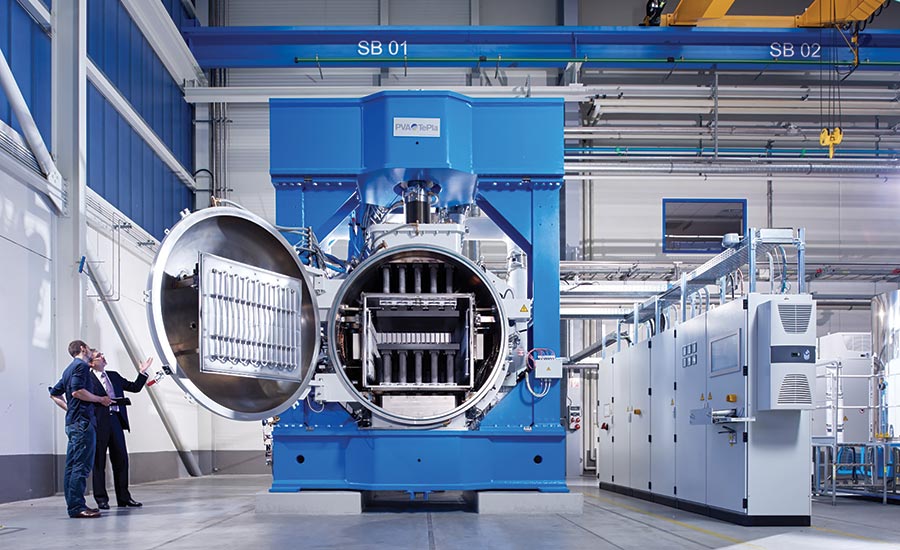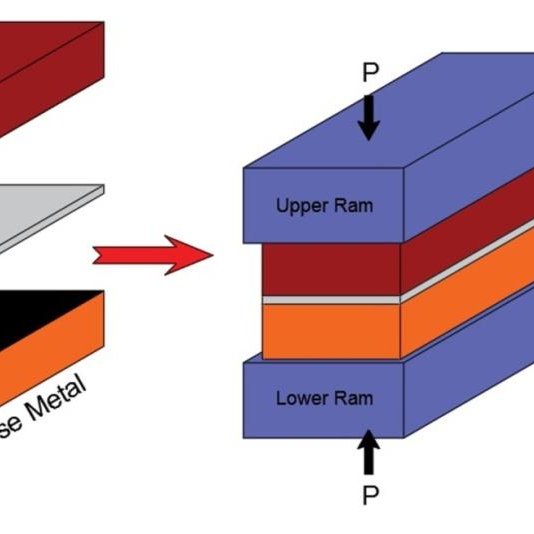Everything You Need to Know About the Diffusion Bonding Technology
Diffusion bonding is a welding process of solid-state. In this process, no fusion phase or liquid is involved. The weld joints are formed from the pure solid-state instead. Moreover, the process does not melt the welding material and plastic deformation is observed at the interface surface. The entire process takes place in a vacuum or an immobile environment. The environment is highly important to reduce the oxidation level in the process.
In this guide, we will tell you everything you need to know about diffusion bonding technology, its applications, advantages, and disadvantages. Stay tuned!
Introduction
To put it in simple words, diffusion bonding is a welding process of solid-state. This process applies to both similar and different materials. Not only this, but you can even join the ceramic materials using this process.
The process involves the diffusion of atoms on the joint interface. The entire process of diffusion bonding takes place at an elevated temperature. The best part about the process is that it does not require any filler materials. Moreover, the joint process of similar materials is entirely autogenous as well. You can even use interlayers during the process of dissimilar materials.
What is the Principle of Diffusion Bonding?
The primary principle of diffusion bonding revolves around bonding. The principle of diffusion is the movement of molecules or atoms from a higher concentration region to a lower concentration region. The technicians apply high pressure on both the materials that are placed on each other. This helps in setting the process in motion. Moreover, the entire process of diffusion bonding is accelerated by heat. But, the important thing to remember here is that the heat temperature must not be too high and should only range between 50 to 70% of the metal’s melting temperature.
What is the Process of Diffusion Bonding?
It is mostly performed on two materials that have a similar structure to crystalline. The process involves clamping the workpieces together. Both the metal surfaces need to face each other for the successful completion of the process.
Additionally, the surfaces of the bonded material are extremely important as well. You need to machine the metal surfaces for them to be as smooth as possible. Not only this, but the surfaces should also be kept free from chemical impurities and residues. You must also remove the material found between the workpieces. This will ensure the successful completion of the process.
Once the materials are successfully clamped, the technicians apply heat and pressure on the workpieces for a lot of time. The surfaces are most commonly heated in a furnace. In some cases, the surfaces are also heated through electrical resistance. You can also use the hydraulic pressure to achieve the pressure that you require. As a result, you get the most accurate measure of the pressure.
Furthermore, if you are using the metals with strong oxide layers, you must carry out the process in an inert environment or a vacuum. This will ensure that the process is carried out successfully.
Types of Diffusion Bonding
There are many types of diffusion bonding. All of these types require a variety of thermal profiles. The most basic types of the process can be categorized into four different types. Let’s check them out below.
1. Solid-State
It is a method in which at least two mating parts are joined. The mating parts in the solid-state diffusion bonding are joined without any assistance of the interface layer. For those of you who do not know, the interface layer is the application of the material between different parts by applying plating, implanting, sputtering, brazing, or in any other form of foil.
The interface in the solid-state diffusion bonding must be welded at the melting point of either the resulting eutectic or the parental material. As a result, there is an increase in grain size by 50%.
2. Activated Diffusion Bonding
The process of the activated diffusion bonding involves the coating of the surface with any solid material. The solid materials used have a small atomic diameter. In addition to this, the vapor pressure of the solid material is higher than the parent material as well. As a result, the bond of the process is enhanced by the mass transport rate and the diffusion of the secondary material.
Another important thing to note here is that the process of the activated diffusion bonding is run at or below the melting point of the resulting eutectic or the parent material.
3. Liquid Interface
In the liquid interface diffusion bonding process, the manufacturers place the secondary material at the bond interface on purpose. As a result, the material melts and produces a liquid during the operation. This is what makes the liquid interface of the process a lot similar to conventional brazing. Although both the methods are quite similar, one must not forget that there are significant differences between the two processes.
The starting interface in the liquid interface diffusion bonding is extremely thin. Since the starting thickness of the liquid interface is highly thin, the second material is very easily diffused into the lattice of the parent material.
4. Transient Liquid Phase Diffusion Bonding
Also known as TLP or TLID diffusion bonding, the transient liquid phase the process involves surfaces that are extremely similar in chemistry and quality to the thin layer bonding method. But, there is a slight difference between the two processes. The difference is that the transient liquid phase diffusion bonding stops the liquid from being formed into a significant amount.
This allows the risk of plugging a small package to reduce by a great amount. But, this does not mean that the surfaces have a poor finish. It allows the successful bonding of the parts that have a risk of poor surface finishes.
Final Words
Diffusion bonding is an extremely useful process that offers a lot of advantages to the users. The bonded materials not only show the same mechanical and physical characteristics as the parent materials but you can easily test them through tensile testing as well. Contact us now for more information!






